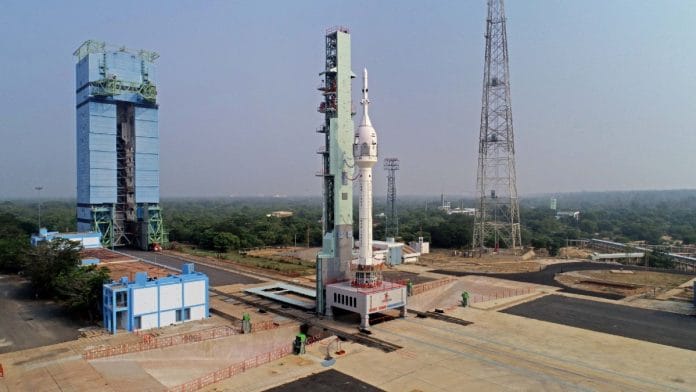New Delhi: The year 2025 is likely to be another busy one for the Indian Space Research Organisation (ISRO) with missions like NVS-02, NISAR and the Gaganyaan project in the pipeline.
Jitendra Singh, Union Minister for Science and Technology and Space, said Tuesday that the new year would begin with the SpaDeX docking experiment, followed by the second NaVIC mission and then a US satellite mobile communication project.
Senior officials from ISRO confirmed that after the successful launch of the Polar Satellite Launch Vehicle-C60 on 30 December from the Sriharikota spaceport, the agency would attempt a space docking experiment (SpaDeX) on 7 January.
SpaDeX experiment
ISRO’s trusted workhorse PSLV, launched two small spacecraft–Target and Chaser–into a 470-km circular orbit Monday.
ISRO chairperson S. Somanath said the two crafts, placed in their intended orbit, would initially move one behind the other. Over the next week, the distance between them would increase to about 20 km before it is closed and docking is attempted.
Successful docking would be a critical experiment for ISRO, as it will set the stage for future projects, including the setting up of the Bharatiya Antriksh Station and Chandrayaan-4.
NVS-02 & enhanced regional navigation
The NVS-02 satellites are also expected to be launched onboard the Geosynchronous Satellite Launch Vehicle (GSLV) around January.
The mission aims to deploy the second-generation satellites part of the Navigation with Indian Constellation (NavIC) system to boost India’s regional navigation capabilities. NavIC is designed with a constellation of seven satellites and a network of ground stations operating 24×7. It offers two services — Standard Position Service (SPS) for civilian users and Restricted Service (RS) for strategic users.
NavIC coverage includes India and a region up to 1,500 km beyond the Indian boundary. It will likely become India’s answer to global navigation systems like the GPS, Galileo and BeiDou. The first NavIC mission (NVS-01) was launched in May 2023.
Also Read: ISRO launches SpaDeX onboard PSLV. How it will pave way for Bharatiya Antariksha Station
NISAR, an India-US project
The NASA-ISRO Synthetic Aperture Radar (NISAR) is a LEO (low-Earth orbit) observatory being jointly developed by NASA and ISRO to map the entire globe in 12 days, while gathering spatially and temporally consistent data that will provide insights into Earth’s ecosystems, ice mass, vegetation biomass, sea level rise, groundwater and natural hazards including earthquakes, tsunamis, volcanoes and landslides.
The satellite carries L and S dual-band SAR, which operates with sweep SAR technique to observe large swathes with high-resolution data. The SAR technique uses a moving radar system to produce high-resolution images of the Earth’s surface.
The initial plan was to launch the satellite in early 2024, but it had to be postponed after a minor fault was detected in the radar antenna reflector.
The radar antenna reflector—a part of the NISAR satellite—had to be returned to the US for a special thermal coating in March. The reflector reached India on 23 October.
ISRO officials said NISAR’s launch would likely be around February 2025. The launch will be conducted from India’s Satish Dhawan Space Centre in Sriharikota onboard ISRO’s Geosynchronous Satellite Launch Vehicle Mark-II.
Also Read: India’s first crewed deep-sea mission set for testing—‘We’re to oceans what ISRO is to space’
Gaganyaan test flight in 2025
The country’s maiden crewed spaceflight programme Gaganyaan is expected to blast off by the end of 2026 but the rocket’s first uncrewed test flight is likely to be held early next year, Somanath said this month.
The project seeks to demonstrate India’s human spaceflight capability by launching astronauts to an orbit 400 km above the Earth for a three-day mission.
Somanath added that ISRO had been working on Gaganyaan for the last four years and that the rocket was fully ready for the first uncrewed test flight.
(Edited by Tikli Basu)
Also Read: Indian humanoid robot Vyommitra set for 2025 launch, Gaganyaan human spaceflight likely by 2026






